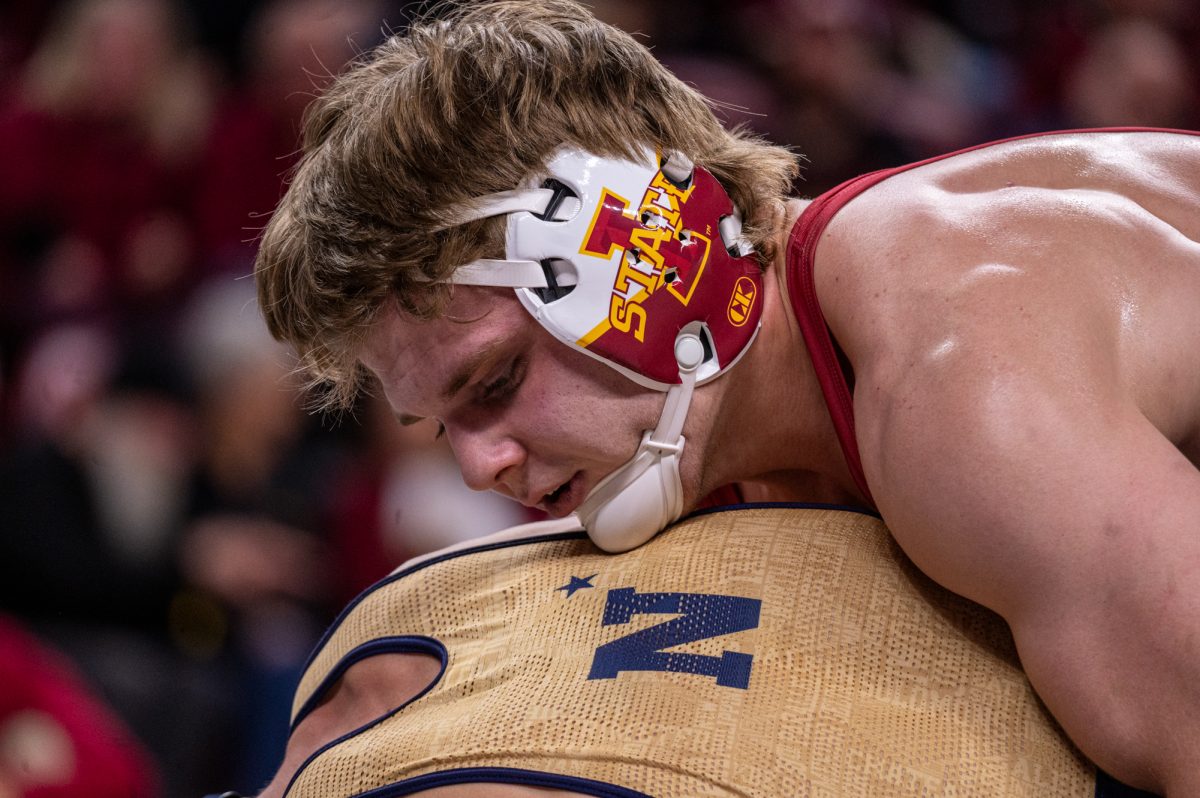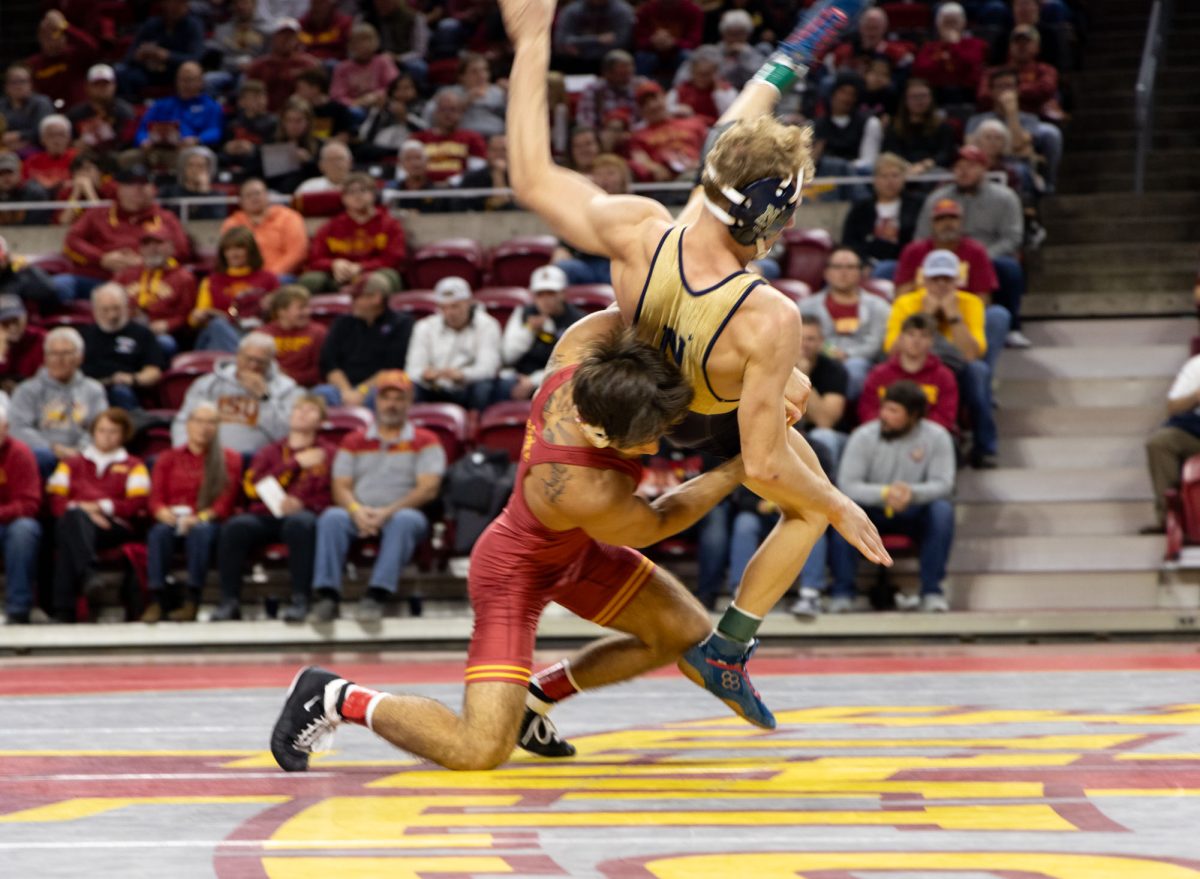Education’s price tag has many hidden costs
April 24, 1996
With the semester barely under way, sophomore Erica Stile found an unwelcome surprise in her mailbox last September.
Along with her second university bill, she will have to come up with $30 more for her Chemistry 163 lab fee.
“I just remember thinking, I have to pay $30 for this lab. It was just more money I had to find. It’s kind of frustrating,” Stile said.
Many students are surprised and sometimes annoyed with what they consider to be unnecessary or inflated special fees.
“When we spend as much as we do on tuition, you would think the university would be able to pay for most of the materials,” said Jon McKnight, a junior in mechanical engineering.
Other students are concerned their money is not used efficiently.
“The real question is, where does the money go? In some classes we never saw any of the benefits,” said Tad Davis, a senior in journalism.
An average student pays around $20 in fees a semester, according to Pat Dale, of the accounts receivable department. Special class fees can range anywhere from $2 to $3 copying fees to $20 to $30 material fees, according to Bill Cahill of ISU’s accounting office.
Cahill found the most recent report from the 1994-95 academic year, which showed that students paid just over $531,000 in special class fees alone. Out of the 3,790 courses offered at ISU this spring, about 545 charged a fee. This means about 14 percent of classes require special fees.
“That sounds reasonable. There aren’t any official figures on that sort of thing,” said associate provost Edwin Lewis.
These unknowns have become a costly problem for some students.
“You don’t always know there will be a change and without warning you’ve been charged for something,” said Tanya Davidson, a junior in graphic design. “And you don’t argue because you just don’t know.”
The most common complaint among students is the vagueness of the fees.
“I guess I don’t know how they allocate the funds, but it seems to me that someone is making money. Students should be aware of the process,” McKnight said.
Students say they are never informed about the breakdown or even the amount of the fees before they enroll in a class, and often students are not aware of the amount until they receive a bill in the mail.
Some students said they forgot they registered for a class requiring a fee, which accounts for a small part of the surprise to students.
A quick look in the course catalog or time table can validate the fee’s existence; however, if the instructor does not make the students aware of the amount they are required to pay, the students have just one more option. The departments of each college have a list of the fees they charge. These are public records and a student enrolled or wishing to enroll in a class may ask for the list, said Pam Masson, assistant department head in industrial education.
Currently, students are billed for the special class fees about a month after class begin.
“This ensures that most students are stabilized and have added what they’re going to add and have dropped what they’re going to drop,” Dale said.
According to Dale, the university realizes the inconvenience of the separate billing process and is working on a modified registration system that will make, at least the payment of the fees, a little easier to swallow.
“In the future the [registration] system will assess the fees with the student’s tuition,” Dale said.
With the new system, if a student wanted to drop a class after paying the fee, the money would simply be credited to his or her account.
In a course catalog any class that might charge a fee will be indicated with a dollar sign. No specific amounts are given because the fee may fluctuate from year to year depending on the class size and the cost of materials. The university is then free to charge an amount unspecified to the student.
“If we were to list a specific amount then we would be locked into that fee for three years because we must turn in our course lists to the catalog almost a year early, and a lot can happen in three years,” said Dean Anderson, physical education department head.
The approval process for special fees varies among each college and in each department. In most cases, the instructors determine a rough estimate and submit it to their respective department heads. The instructors must fill out a form called “special course fee,” where they must detail what the money will be used for.
“We try to keep the fees at an absolute minimum,” Lewis said. “The fees are reviewed every other year for each catalog, so they stay current.”
Departments are given three chances to a semester to adjust their fees before students are charged. Once the fees are approved by the departments, they go on to each college for review by its associate dean. From there the charge goes through its final review by Lewis.
“The fees go through a lengthy process in each department. By the time they are proposed to me the fees have been made as reasonable as possible. I rarely reject a request,” Lewis said.
Most of the departments hold their instructors responsible for justifying the fees to their students. Some students said their instructors were unaware of this responsibility or they were ignoring it.
“By the time I had to pay the fee, I had already been to the [chemistry] lab several times. We used the same materials over and over again. I don’t see what our money went toward. I think the university must be making some profit,” said Stile, a sophomore in agriculture business.
The professor for Chemistry 163, Dennis Johnson, said, “I have no control over the fees. I think they are reasonable where there is a laboratory used and lab costs are involved.”
“For journalism 353 we were charged $20 although we never used any tapes or equipment of any sort, nothing that had to be bought,” said Davis. “The only thing the money might have been used for was to provide an end of the semester pizza party.”
But some instructors do justify the fees to their classes.
According to Davis, his German 101 and 102 professors gave the students a sheet explaining what the fees would be used for, which each student signed.
In defense of his class fee, journalism professor Tom Beell said, “The money is used to pay for replacement parts and other repairs for video equipment in the studio. As far as last semester’s 353 class, it was not my most successful attempt at that class, and I did not use the studio as much as I have in past semesters. 353 is not a fair test. If you look at broadcast classes like JLMC 306, the studio is used much more successfully.”
Dean Anderson, professor and department head of physical education, sees both sides of the special fees process and said his fees are more than reasonable.
“We’re not getting rich,” said Anderson. “None of the money even covers the specialized instructors required for the courses. The fees provide a service for the students.”
Anderson said he does not have to offer most of his recreation classes such as bowling and ice skating. Over the years many of them have been discontinued due to a lack of funds.
The highest fee on Anderson’s list is $40 for an Athletic Training class—the only class that he is required to offer for physical education majors, according to Anderson.
The $40 is needed for the large amount of athletic tape used during the semester. The other fees in the physical education department are used strictly for materials and various Red Cross certifications for CPR, life guarding, and other classes sponsored by the Red Cross, Anderson said.
The highest fees for industrial education are required for manufacturing classes. A manufacturing process class has a fee of $85, and the introduction to manufacturing materials asks for $50. Both cover wood, steel and plastic materials, said Masson, assistant department head in industrial education.
“These are extreme fees, but you have to realize how expensive lumber and steel are, it’s incredible. We try not to have any money left over, in fact sometimes we go in the hole,” Masson said.
Darryl Trulin, associate dean of engineering, stressed the constant change the fees go through.
“The fees are not uniform. They change as the budgets of each department are altered,” Trulin said. “We just don’t have the money for consumables, things that are built or destroyed in labs, such as carbon and other fibers, lumber and plastic.”
Most fees in the engineering department are closer to $2 and $3, according to Trulin. However, aerospace engineering flight course requires a $150 fee, allowing for field trips to an airport and some flight experience, required for the course, and a chemical engineering exchange to London carries with it a $200 fee covering obvious expenses.
“These are our only large fees and are actually much lower than what it would cost a student to have these experiences on their own,” Trulin said.






